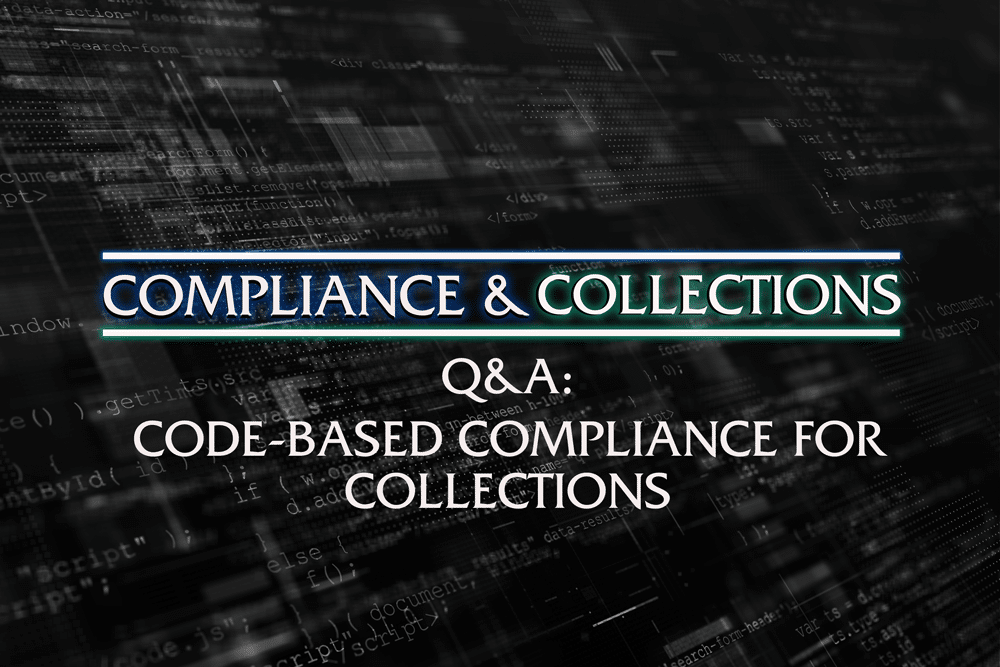
Just as technology has evolved leaps and bounds, so have consumer communication preferences, especially when it comes to debt collection. The Consumer Financial Protection Bureau (CFPB) recognized in Regulation F—rules updating the Fair Debt Collection Practices Act (FDCPA)—that consumers in debt want to communicate with debt collectors through digital channels, like email and SMS.
Under the FDCPA, Regulation F, and other state laws, these digital channels have the same compliance requirements as calls, such as no harassment or abuse, no false or misleading representations, and no unfair practices. Even though these additional channels have the similar compliance requirements, businesses must still manage these requirements across all channels and have the capacity to update requirements as new laws are passed, new cases come out, and new guidance is released from regulators causing a need to change in a compliance practice. How can businesses ensure compliance through the evolving regulatory landscape?
Code-based compliance is a critical component for the debt collection industry.
We interviewed five key stakeholders in this process to get different perspectives on what code-based compliance is and how it benefits businesses, lenders, consumers, and auditors. Read below for insights from: Eric Nevels, Director Operational Excellence; Hal Eisen, VP Engineering; Kelly Knepper-Stephens, Chief Compliance Officer and General Counsel; Michael Lemoine, Director Client Success; and Milo Onken, Director Quality Assurance.


What is Code-Based Compliance?
Eric Nevels: When an algorithm is used to help make decisions on consumer communications in debt collection, a code-based compliance system would be coded into that algorithm or work side-by-side with the algorithm to ensure that all digital communications fall within federal and state laws and regulations.
Michael Lemoine: Here’s an analogy to help explain code-based compliance: You lace up your new running shoes. You scoured all the online reviews and this pair provides the best ankle support. You ate a light but fuel packed breakfast, no mid run slump for you. You eyed the weather app on your phone, all clear and perfect temp. Hydrated, check. Headphones, check. Mood, great! You’ve got this, everything is under control and accounted for. Off…you… go!
Even if you’re not a big runner this sounds like a safe and productive way to start a day. But what if instead of checking for rain and eating a little oatmeal to make sure you had a good jog, you had to manually complete a full body diagnostic and perform microsecond electrical and chemical adjustments to your body just so you didn’t become disabled or even die while getting a little exercise? Not so safe and productive now. Is the risk of immediate death worth the effort and small reward of a single run?
Every second your body automatically, without thought or effort, reads your current condition and reviews thousands of risks and initiates controls, responses, and actions to keep you alive—called the autonomic nervous system. Code-based compliance is the autonomic nervous system of an organization’s risk and control program. Now, it’s not as dramatic as life and death, but code-based compliance can supercharge any compliance management system because once the code has been programmed and deployed the system always follows the programmed rules leading to consistency and accuracy.

How is Code-Based Compliance Different From More Traditional Approaches to Compliance?
Eric Nevels: In the absence of code, human beings would need to check against the various restrictions on communications. Anytime humans are involved, even with rules and procedures in place, it is possible for errors to occur. With a code-based system, it is impossible for that action to take place.
Kelly Knepper-Stephens: Certainly it’s better than manual compliance because with manual compliance you have an opportunity for human error. But it doesn’t mean that code-based compliance is “code it and forget it.” Your coders need a process to quality check the code. And your compliance team or a front line control team needs to monitor to make sure the coded compliance rules are working as you intended them to work.

How Does This Approach Benefit Collection Compliance Strategies?
Hal Eisen: Code-based compliance is great because it never gets tired or distracted and is not subject to any of the other human frailties. Done correctly, it can be efficiently applied to a wide range of software products without needing additional investment. Most compliance rules were written for the benefit of consumers. The better we comply, the safer consumers are. Consumers should have accurate disclosures, fewer annoying interactions and feel better about the whole experience.
Eric Nevels: Lowers operational risk and ensures compliance with regulations. Additionally, it is much easier to update the code when regulations are changed. It helps ensure that they are being treated within the bounds of the law, which is their benefit.
Milo Onken: The code-based approach ensures accuracy and tangible evidence for compliance audits. Collaboration with different internal teams and Legal ensures we check, implement, and follow industry compliance directives.

A Code-Driven Future for Debt Collection
Code-based compliance offers predictable and consistent collections methods when coupled with digital platforms. New technology can be mistaken as a risky investment, but digital debt collection systems offer more compliance security and more transparency—for consumers and creditors. Digital collection solutions not only evolve to meet consumer needs, but they can also continually adapt to changing regulations and quickly meet compliance requirements.
Beyond code-based compliance, what are compliance issues unique to collections that need to be front of mind when sending digital communications to effectively engage your customers?
Join us Thursday September 29th at 1pm ET for our interactive webinar, The Future of Collections & Compliance, hosted by TrueAccord Associate General Counsel Lauren Valenzuela and Director User Experience Shannon Brown.
Reserve your space now for an interactive discussion on:
- Cutting edge digital collection compliance
- The role of the legal team in creating a digital collection strategy
- How compliance drives collection revenue
- The future of digital compliance
Register now for the upcoming webinar»»

*This blog is not legal advice. Legal advice must be tailored to the particular facts and circumstances of each unique matter.